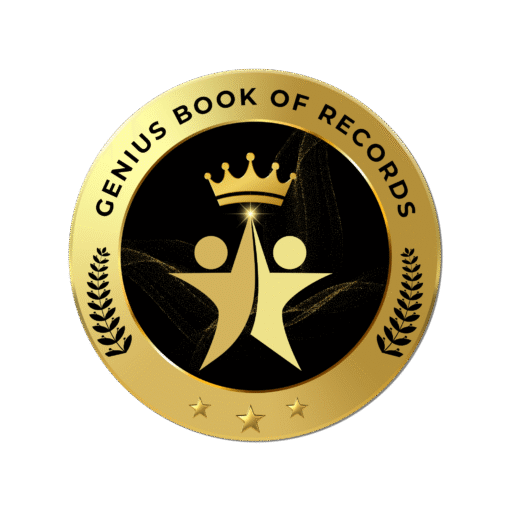Have you ever looked at a spoon & wondered if it could stand upright on its edge? Or stared at a stack of oranges & thought – could I make them stand one on top of the other without support? Welcome to the strange, mesmerizing & surprisingly fun world of object balancing. It’s more than a party trick or a moment of idle curiosity – it’s a fascinating fusion of physics, patience, mindfulness & creativity.
Whether you’re trying to balance a pencil on your fingertip or a chair on a bottle, there’s something universally satisfying about making the seemingly impossible, possible – even for a few seconds. Let’s dive into why balancing objects is not just a quirky hobby but a rewarding mental & physical challenge anyone can enjoy.
The Unexpected Art of Balance
Balancing objects is an art as much as it is science. It involves understanding an object’s center of gravity, weight distribution & stability. Yet, it doesn’t require a degree in physics to start. All it takes is curiosity & a bit of experimentation.
From forks balanced on toothpicks to stones stacked like sculptures, people around the world are pushing the limits of gravity. Some do it for Instagram likes, others for the meditative joy it brings. Regardless of the reason, balancing objects you never thought could stand opens your eyes to hidden possibilities – & hidden talents.
Everyday Objects, Extraordinary Balance
You don’t need to buy anything special to get started. Just look around your home or office:
- Books: Try standing one on its edge, then stack two more at odd angles.
- Cutlery: Spoons & forks can balance on glasses, bottles, or even each other.
- Toothbrushes: Surprisingly good for balance challenges.
- Fruits: Apples, oranges, lemons – they’re not just healthy snacks anymore.
- Tools: Screwdrivers, hammers & even tape measures can become balancing marvels.
What makes it fun is discovering which combinations defy your expectations. Try balancing a bottle upside-down on a tennis ball. Or rest a frying pan on the rim of a cup. These experiments can lead to unexpected triumphs – & a few harmless failures that teach you something each time.
Why You Should Try It
Balancing objects may sound like a whimsical pursuit, but it brings real benefits:
#1 – Improves Focus & Patience
In a world driven by speed & multitasking, balancing objects forces you to slow down. You must be fully present, observing minute shifts in weight or air movement. It sharpens concentration & teaches calm perseverance.
#2 – Exercises Your Hands & Mind
Your fingers become more sensitive, your grip steadier & your problem-solving instincts sharper. It’s like yoga for your hands & a puzzle for your brain.
#3 – Reduces Stress
Like doodling or building with blocks, balancing things is a creative & therapeutic way to unwind. It’s a tactile, no-screen activity that grounds you in the moment.
#4 – Sparks Creativity
You begin to see the world differently. A ketchup bottle isn’t just for sauce anymore – it’s a potential balancing base. Your imagination gets a workout.
Start With the Basics
If you’re new to object balancing, here are a few starter-friendly challenges:
- Spoon on Fork: Wedge a spoon between the tines of a fork, then try to balance them both on the rim of a glass.
- Pencil Pyramid: Balance three pencils in a triangle, all touching tip to tip.
- Rock Stack: Collect a few flat stones & try to build a tower. Nature is a great place for balance exploration.
Work your way up from simple shapes to trickier, top-heavy ones. Eventually, you’ll develop a feel for what’s possible.
Going Next Level – Viral & Virtual Balance Challenges
Object balancing has found a thriving home online. TikTok, Instagram & YouTube are full of viral clips showing people balancing everything from bicycles on basketballs to ladders on wine bottles.
You can take part in global challenges like:
- #BalanceChallenge: Share your most mind-bending creations.
- 30-Day Balance Journey: Try a new object every day for a month.
- Blind Balance: Close your eyes & feel your way to a stable arrangement.
Some even use augmented reality (AR) filters to simulate object stacking before trying it in real life!
Lessons in Balance (Beyond the Physical)
This might surprise you: balancing objects teaches us more about life than it seems.
- Adaptability: Things rarely stand on the first try. Like in life, it’s about trial, error & adjustment.
- Perspective: What looks impossible from one angle might work perfectly from another.
- Mindfulness: You learn to observe without judgment. Each failure is feedback, not defeat.
In a way, balancing is a metaphor for the juggling act of modern life – finding stability among chaos, holding things together with care & knowing when to make tiny adjustments.
Community & Sharing
One of the best parts about balancing objects is how it brings people together. Try it at home with family, as a fun team-building exercise at work, or even as a party icebreaker. You’ll be amazed at the conversations it sparks & the laughter it brings.
Online forums & local hobby groups often feature challenges or competitions. Some cities even host balance festivals where artists create towering sculptures out of everyday materials – often without glue or wires!
Safety First!
A quick word of caution – if you’re trying to balance heavier or breakable items, make sure your environment is safe:
- Avoid balancing near electronics or glass.
- Don’t stack anything too high in areas with kids or pets.
- Use both hands to stabilize until you’re confident.
Let your sense of wonder run wild – but keep your sense of safety, too.
Final Thoughts – Dare to Defy Gravity
So, what are you waiting for? Take a spoon, a book, or even a banana & see what you can make stand. It might wobble, it might fall – but eventually, it will balance. & when it does, you’ll feel that little spark of joy that comes from doing something that seemed impossible.
In a time when we’re constantly looking for the next big thing, maybe all we need is a small moment of stillness. A moment where gravity holds its breath – & you’re the one calling the shots.
Try balancing objects you never thought could stand.
Because maybe, just maybe, you’ll find new ways to stand tall yourself.




